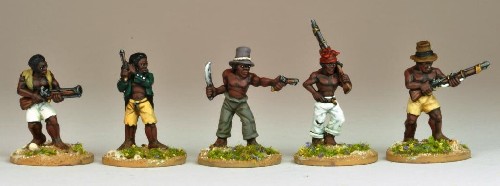We learn to trust strangers from a very young age. Not just uncles, cousins and neighbours, but also teachers, policemen, doctors and even newsreaders on TV. Compared to our ancestors and other animal species, humans have raised trust to unknown heights. Bruce Schneier , in his new book
Liars & Outliers, takes us on a tour of how that trust came to be, how it manages to work in the majority of cases and why it doesn’t work in the rest.
Schneier uses Francis Fukuyama’s definition of trust, which holds that other members of society act in a predictable, honest and co-operative way, based on shared norms. This is enormously helpful for society as a whole, because there are costs and risks involved in dealing with others and establishing their trustworthiness. If society can organise itself so that we can safely trust other members, that save sus a lot of time and money.
Liars & Outliers most pressing question is how society can function based on trust when the short term and selfish interest of it’s members are often contrary to the long term benefit of the group. Put in different terms: people continuously decide whether to co-operate with the group or to defect.
There’s a number of pressures that society exerts to keep its members in the fold. Moral pressure makes us feel good or bad about our choices, reputational pressure makes us worry about the judgement of our peers. In a small group, those pressures are quite powerful and will generally convince us to stick to the norms.
But in bigger groups this no longer works as well, as fewer people know us and not as well. There is also less social control and more alternatives if our peers ostracise us. In these larger groups, the maintenance of the group norms has been delegated institutions: the church, the state, the council, the company.These institutions work with officials and formalised rules like laws, regulations and protocols.
Finally, there are security systems designed to keep you conformant. Locks and keys keep you out, your antivirus software protects your computer and cameras in the public space watch your movement and actions.
All these pressures determine the parameters in the trade off that every member of a group makes dozens if not hundreds of times a day. In simple cases, all these pressures point the same way, but often the pressures compete. You conscience may guide you one way, but the pressure of your peers keeps you from speaking out. You may be desperate to get food for your kids but gates and walls keep you from taking it from others. And group loyalties may conflict. Your membership of a gang may be more important than that of your local community. In some cases this can make decisions to co-operate or defect very difficult.
Societies have built institutions that can set these parameters. It can hire more policemen, set tougher penalties, offer more aid to potential victims (easing your conscience). However, this not easy to get right. First of all, there is delay in adjustment and longer in more complex institutions. Legislation may take years and funds allocated to execute policies take years to get in the budget. The transgressor are ahead of you all this time. Which gets worse if the technological advance is very fast. It takes even longer to measures the effects of new policies, and it´s hard to tell whether the policies were responsible for the observed changes at all. And even if you get the desired result, it may have unwanted side effects that require new policies to deal with.
Also, society sometimes goes after the wrong problems. The fact that we have the illusion that we can actually handle risk, that we can eliminate it, is very dangerous and makes it hard to remain objective. We tend to overstate the risk of catastrophic, singular and unexpected and understate the risk of what is familiar and controlable. That’s why more money is spent on counter-terrorism than road safety, although the latter causes more deaths. In fact, the most scary things imaginable are unknown risks.
Therefor it is all the more surprising that most people (to paraphrase Lincoln) stick to most of the rules most of the time. The first part of Schneier’s book deals with the theoretical and empirical evidence from evolutionary psychology, (socio)biology, game theory and other fields of science on what makes people so surprisingly co-operative. Especially when you compare it to our cousins, the baboons, who will defect from co-operating midway through a chase for prey. In some way humans have developed a wide array of pressures to get people to put their own short term interests aside and join with others for future benefit.
Schneier uses defection and society in a neutral sense. His view is that nobody sticks to all the rules all the time, and that this is natural. Moreover, some societies, or aspects of societies are bad (or can be seen as bad) and worth changing, and defection thus can be a good thing. This is different from the good/evil dichotomy that some people work by.
 |
| Schneier in action |
The pressures mentioned above are strong positive feedbacks loops to conformity and they tend to stifle societal change. So an important question is whether we should foster non-conformity more? What I missed in Schneier’s book was that long term vision, maybe because I’m a historian and he’s a securitarian. By keeping society abstract, he doesn’t touch the subject whether certain societies have been better at dealing with non-conformity and whether they profited from this. For example democratic societies with free speech and protection from violent and legal repression by other members of society, the church and the state?
Modern societies have developed ways for people to defect without being ostracised from society as a whole. We have since long given artists more room for individual expression and have accepted that they not only break artistic rules but also have looser morals, dress more extravagantly and permit themselves a more critical stance towards authority. More recently we tolerate conscientious objectors, encourage whistle blowers and cheer on noble bandits like Robin Hood.
Has western society struck a balance between individual and collective that is superior to authoritarian societies? Not for nothing do most comparative studies show that western societies are more trusting in general than other societies? So can the lesson be, even if Schneier doesn’t make it explicit, that a society which allows its members to break some of the rules is stronger, as long as they don’t break them all?
Full disclosure: I won a galley copy of this book in a competition because I promised to give it away

.jpg)
.jpg)
.jpg)
.jpg)
.jpg)
.jpg)






































